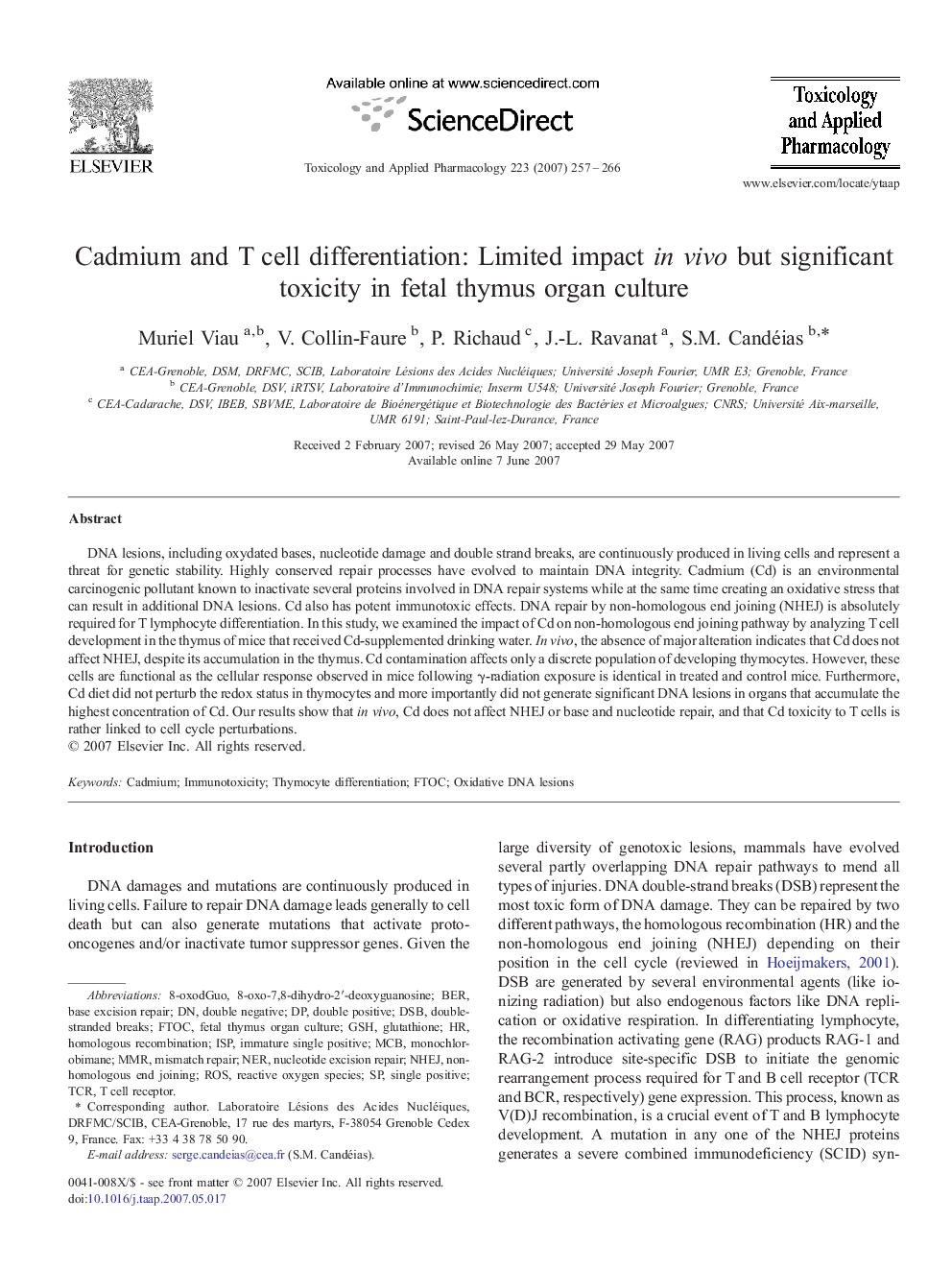| Article ID | Journal | Published Year | Pages | File Type |
|---|---|---|---|---|
| 2570750 | Toxicology and Applied Pharmacology | 2007 | 10 Pages |
DNA lesions, including oxydated bases, nucleotide damage and double strand breaks, are continuously produced in living cells and represent a threat for genetic stability. Highly conserved repair processes have evolved to maintain DNA integrity. Cadmium (Cd) is an environmental carcinogenic pollutant known to inactivate several proteins involved in DNA repair systems while at the same time creating an oxidative stress that can result in additional DNA lesions. Cd also has potent immunotoxic effects. DNA repair by non-homologous end joining (NHEJ) is absolutely required for T lymphocyte differentiation. In this study, we examined the impact of Cd on non-homologous end joining pathway by analyzing T cell development in the thymus of mice that received Cd-supplemented drinking water. In vivo, the absence of major alteration indicates that Cd does not affect NHEJ, despite its accumulation in the thymus. Cd contamination affects only a discrete population of developing thymocytes. However, these cells are functional as the cellular response observed in mice following γ-radiation exposure is identical in treated and control mice. Furthermore, Cd diet did not perturb the redox status in thymocytes and more importantly did not generate significant DNA lesions in organs that accumulate the highest concentration of Cd. Our results show that in vivo, Cd does not affect NHEJ or base and nucleotide repair, and that Cd toxicity to T cells is rather linked to cell cycle perturbations.
